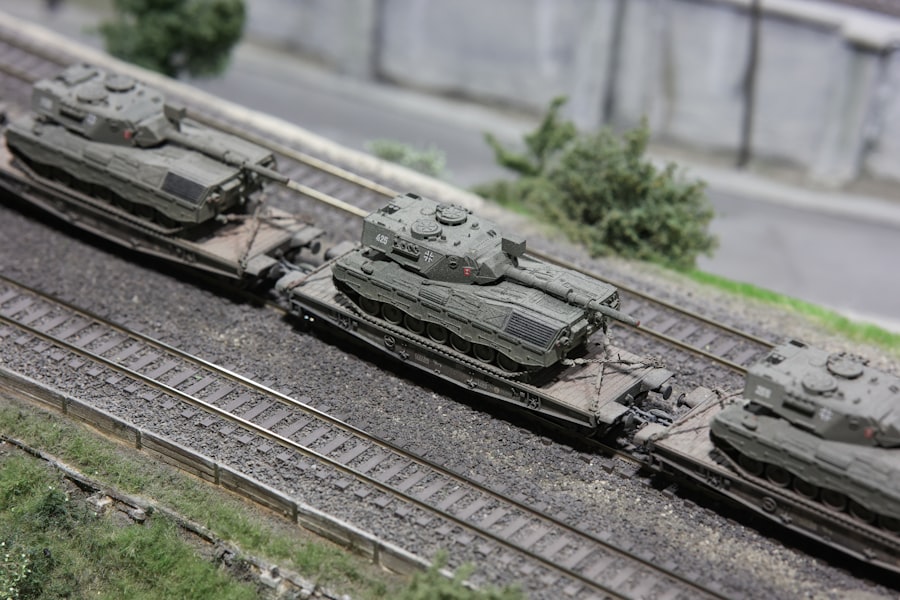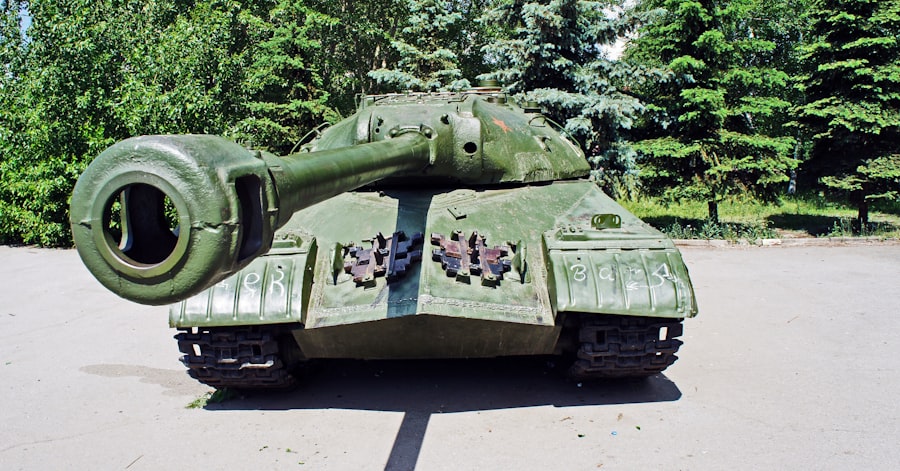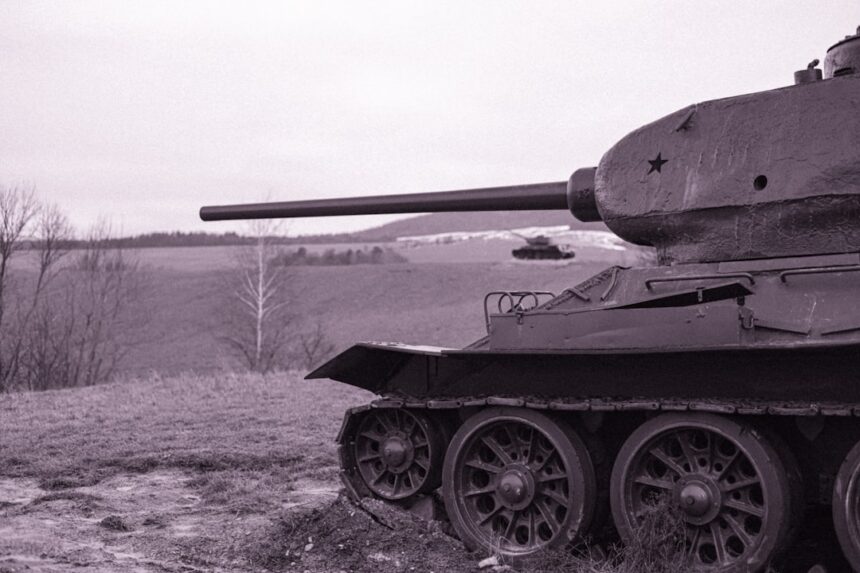Russian tank armor has long been a subject of fascination and scrutiny within military circles and among defense analysts. Renowned for its robust design and formidable presence on the battlefield, Russian tank armor has evolved significantly over the decades. The evolution reflects not only technological advancements but also the strategic doctrines that have shaped Russia’s military engagements.
As the backbone of the Russian ground forces, tanks equipped with advanced armor systems are pivotal in both offensive and defensive operations, making their effectiveness a critical factor in modern warfare. The importance of tank armor cannot be overstated, as it serves as the first line of defense against a myriad of threats, including anti-tank missiles, artillery fire, and other armored vehicles. Russian tank designs, such as the T-72, T-80, and T-90, have been engineered to withstand significant damage while delivering powerful firepower.
However, the complexities of modern warfare have introduced new challenges that necessitate a reevaluation of existing armor technologies and strategies. This article delves into the historical development, comparative analysis, vulnerabilities, and future prospects of Russian tank armor.
Key Takeaways
- Russian tank armor has a long history of development and has been a key component of the country’s military strategy.
- Compared to Western tank armor, Russian tank armor has different design principles and materials, leading to strengths and weaknesses in different areas.
- Weaknesses in Russian tank armor design include vulnerabilities to modern anti-tank weapons and the impact of urban warfare on its effectiveness.
- Case studies of Russian tank armor failures highlight the challenges in upgrading and improving the armor to meet modern threats.
- The weaknesses in Russian tank armor have international implications and may impact the country’s military capabilities in future conflicts.
Historical Development of Russian Tank Armor
The historical trajectory of Russian tank armor can be traced back to the early 20th century, with the introduction of the first Soviet tanks during World War
However, it was during World War II that the Soviet Union made significant strides in tank design and armor technology. The iconic T-34 tank emerged as a symbol of Soviet engineering prowess, featuring sloped armor that enhanced its survivability against enemy fire. This design philosophy laid the groundwork for future developments in Russian tank armor.

In the post-war era, the Soviet Union continued to innovate, leading to the development of tanks like the T-55 and T-62, which incorporated advancements in armor materials and design. The Cold War period saw further enhancements, with the introduction of composite armor and reactive armor systems in tanks such as the T-80 and T-90. These innovations aimed to counteract the growing threat posed by Western anti-tank weapons.
The evolution of Russian tank armor has been characterized by a blend of practicality and adaptability, reflecting the changing nature of warfare and technological advancements.
Comparison with Western Tank Armor
| Armor Type | Western Tank Armor | Comparison |
|---|---|---|
| Composite Armor | Used extensively | Less commonly used |
| Reactive Armor | Commonly integrated | Less integrated |
| Steel Armor | Historically used | Less prevalent |
When comparing Russian tank armor to its Western counterparts, several key differences emerge that highlight distinct design philosophies. Western tanks, such as the M1 Abrams and Leopard 2, often prioritize advanced composite materials and modular armor systems that allow for greater flexibility in protection levels. These tanks are designed with an emphasis on mobility and situational awareness, often incorporating advanced targeting systems and electronic warfare capabilities.
In contrast, Russian tank armor has traditionally focused on maximizing protection through thicker steel and innovative designs like sloped armor. While this approach has proven effective in many scenarios, it can sometimes result in heavier vehicles that sacrifice mobility for protection. Additionally, Russian tanks often rely on reactive armor systems to counter modern threats, which can provide a significant advantage against certain types of munitions.
However, this reliance on reactive armor can also introduce vulnerabilities if not properly integrated with other defensive measures.
Weaknesses in Russian Tank Armor Design
Despite its strengths, Russian tank armor is not without weaknesses. One notable issue is the reliance on traditional steel armor in some designs, which may not offer the same level of protection as modern composite materials used by Western tanks. This can leave Russian tanks vulnerable to advanced anti-tank weapons that have been developed in recent years.
Furthermore, while reactive armor can mitigate damage from certain projectiles, it may not be effective against all types of modern munitions. Another weakness lies in the integration of armor systems with other defensive technologies. While Russian tanks are equipped with various countermeasures, such as smoke grenades and electronic warfare systems, there have been instances where these systems have failed to provide adequate protection in combat situations.
The lack of a comprehensive approach to armor design that incorporates both physical protection and active defense mechanisms can leave Russian tanks exposed to evolving threats on the battlefield.
Vulnerabilities to Modern Anti-Tank Weapons

The landscape of modern warfare has seen a dramatic increase in the sophistication and lethality of anti-tank weapons. Systems such as Javelin missiles and various drone-delivered munitions pose significant challenges to traditional tank armor designs. Russian tanks, while formidable in many respects, have shown vulnerabilities to these advanced weaponry types.
The advent of top-attack munitions has particularly highlighted weaknesses in conventional armor configurations. Moreover, the proliferation of anti-tank guided missiles (ATGMs) has made it increasingly difficult for armored vehicles to operate safely on the battlefield without adequate countermeasures. The effectiveness of these weapons against Russian tanks has raised concerns about their survivability in future conflicts.
As adversaries continue to develop more advanced anti-tank capabilities, it becomes imperative for Russian military strategists to reassess their armor designs and consider integrating new technologies that can enhance survivability.
Impact of Urban Warfare on Russian Tank Armor
Urban warfare presents unique challenges for armored vehicles, including those equipped with Russian tank armor. The confined spaces and complex environments found in urban settings can limit the effectiveness of traditional tank maneuvers and expose vulnerabilities that may not be apparent in open terrain. In such scenarios, tanks are often subjected to ambush tactics from insurgents or enemy forces utilizing improvised explosive devices (IEDs) and anti-tank weapons.
The experience gained from conflicts in cities like Grozny during the Chechen Wars has underscored the need for adaptability in tank design and deployment strategies.
The challenges posed by urban warfare necessitate a reevaluation of how Russian tank armor is utilized in combat scenarios where traditional advantages may be diminished.
Challenges in Upgrading Russian Tank Armor
Upgrading Russian tank armor presents a series of challenges that must be navigated carefully by military planners and engineers. One significant hurdle is balancing modernization efforts with budgetary constraints. As defense budgets fluctuate due to economic pressures, prioritizing upgrades for existing tank fleets can become contentious within military circles.
This can lead to delays in implementing necessary improvements to armor technology. Additionally, integrating new technologies into existing platforms can be complex and time-consuming. The need for compatibility between upgraded systems and legacy components can hinder progress and complicate maintenance efforts.
Furthermore, there is often resistance to change within military institutions that may favor established practices over innovative approaches. Overcoming these challenges requires a concerted effort from both military leadership and defense contractors to ensure that Russian tank armor remains competitive in an evolving battlefield landscape.
Case Studies of Russian Tank Armor Failures
Examining specific case studies where Russian tank armor has failed provides valuable insights into its vulnerabilities and areas for improvement. One notable example is the performance of T-72 tanks during the Iraq War, where they faced significant losses against American forces equipped with advanced anti-tank weaponry. Reports indicated that many T-72s were destroyed due to their inability to withstand modern munitions, highlighting critical weaknesses in their armor design.
Another case study involves the conflict in Ukraine, where various models of Russian tanks encountered challenges against both conventional forces and irregular combatants employing guerrilla tactics. Instances of ambushes using ATGMs demonstrated how outdated tactics could lead to catastrophic losses for armored units. These failures underscore the necessity for continuous evaluation and adaptation of tank designs to address emerging threats effectively.
Strategies for Improving Russian Tank Armor
To enhance the effectiveness of Russian tank armor in contemporary warfare, several strategies can be employed. First and foremost is investing in research and development focused on advanced materials that offer superior protection without significantly increasing weight. Exploring composite materials or hybrid solutions could provide a pathway toward more resilient armor systems.
Additionally, integrating active protection systems (APS) into existing tank designs could significantly improve survivability against modern anti-tank threats. APS technologies can detect incoming projectiles and deploy countermeasures to neutralize them before impact. By adopting a multi-layered defense strategy that combines passive armor with active systems, Russian tanks could better withstand diverse threats on the battlefield.
International Implications of Russian Tank Armor Weaknesses
The weaknesses inherent in Russian tank armor have broader implications for international security dynamics. As adversaries observe these vulnerabilities, they may feel emboldened to challenge Russia’s military capabilities more aggressively. This could lead to an escalation of tensions in regions where Russia maintains a significant military presence or seeks to exert influence.
Moreover, the perceived inadequacies of Russian tank armor may prompt neighboring countries to invest more heavily in their own military capabilities or seek alliances with Western powers for advanced defense technologies. This shift could alter regional power balances and lead to an arms race as nations strive to counter perceived threats from Russia’s armored forces.
Conclusion and Future Prospects for Russian Tank Armor
In conclusion, while Russian tank armor has a storied history marked by innovation and resilience, it faces significant challenges in adapting to modern warfare’s evolving landscape. The historical development of Russian tank designs reflects a commitment to robust protection; however, vulnerabilities exposed by contemporary anti-tank weapons necessitate urgent attention from military strategists and engineers alike. Looking ahead, the future prospects for Russian tank armor will depend on its ability to integrate new technologies while addressing existing weaknesses.
By embracing innovation and adapting strategies to meet contemporary threats, Russia can enhance its armored capabilities and maintain its position as a formidable force on the global stage. As military conflicts continue to evolve, so too must the designs and strategies surrounding one of warfare’s most iconic vehicles: the tank.
In the ongoing analysis of military equipment, the article “Why Russian Tanks Have Bad Armor” delves into the vulnerabilities and design flaws that have been observed in Russian armored vehicles. A related discussion can be found in another insightful piece on the same platform, which explores broader military strategies and equipment assessments. For a deeper understanding of these topics, you can read more in this related article on the In The War Room website. This article provides additional context and expert opinions on the challenges faced by modern armored units in various combat scenarios.
WATCH NOW! 🎖️ Plot Twist: Russia’s Military Is Being Eaten Alive By Its Own Corruption
FAQs
What is the armor on Russian tanks made of?
The armor on Russian tanks is typically made of steel, composite materials, and reactive armor.
Why is the armor on Russian tanks considered to be bad?
The armor on Russian tanks is considered to be bad in comparison to Western tanks due to its lower level of protection against modern anti-tank weapons and technologies.
What are some weaknesses of the armor on Russian tanks?
Some weaknesses of the armor on Russian tanks include vulnerability to advanced anti-tank missiles, lack of advanced composite materials, and outdated reactive armor technology.
How does the armor on Russian tanks compare to Western tanks?
The armor on Russian tanks is generally considered to be less effective than the armor on Western tanks in terms of protection against modern anti-tank weapons and technologies.
Are there any efforts to improve the armor on Russian tanks?
Yes, there are ongoing efforts to improve the armor on Russian tanks, including the development of new composite materials and reactive armor technologies.




